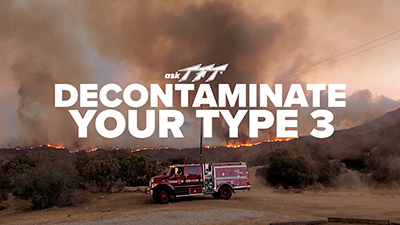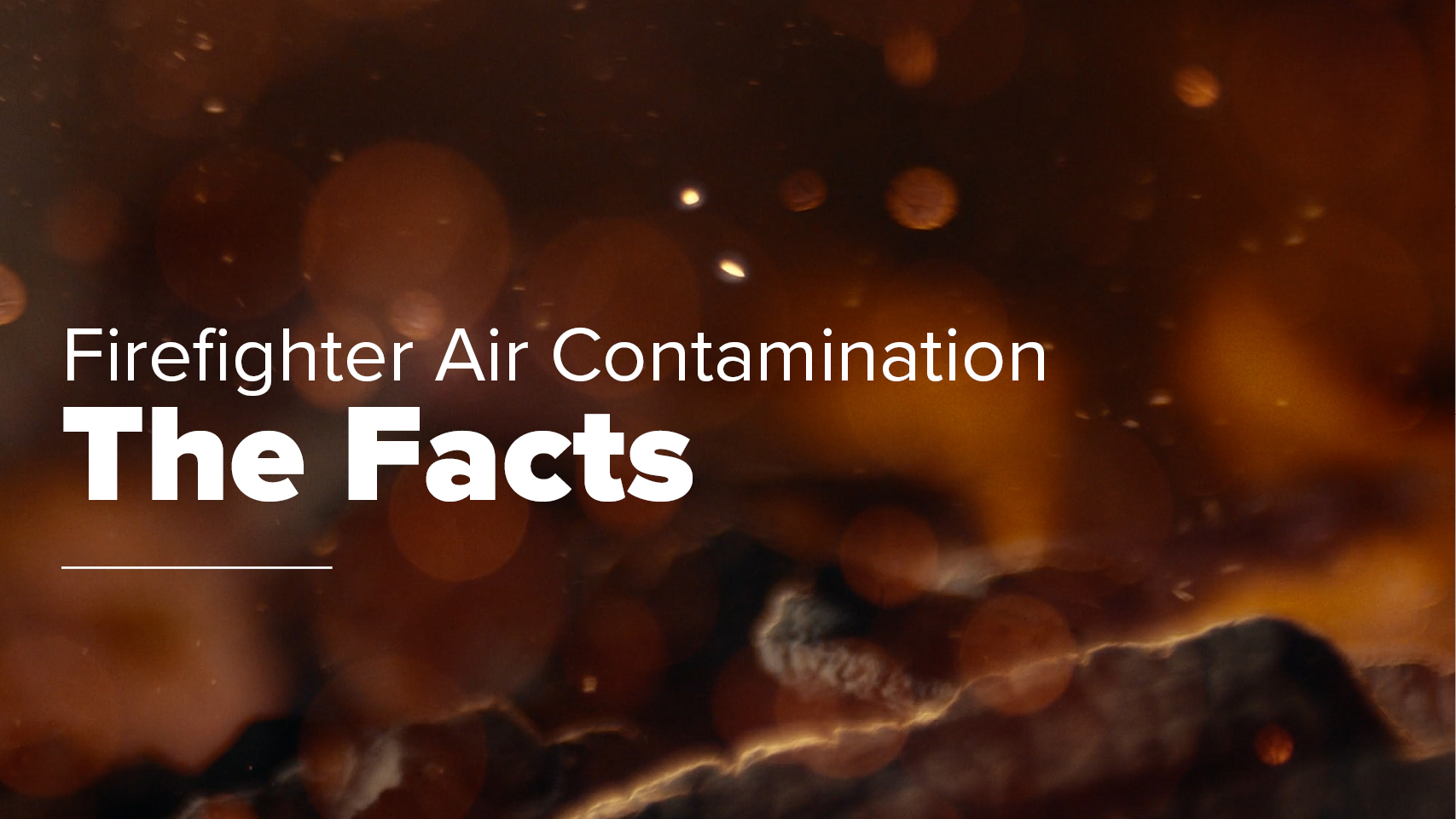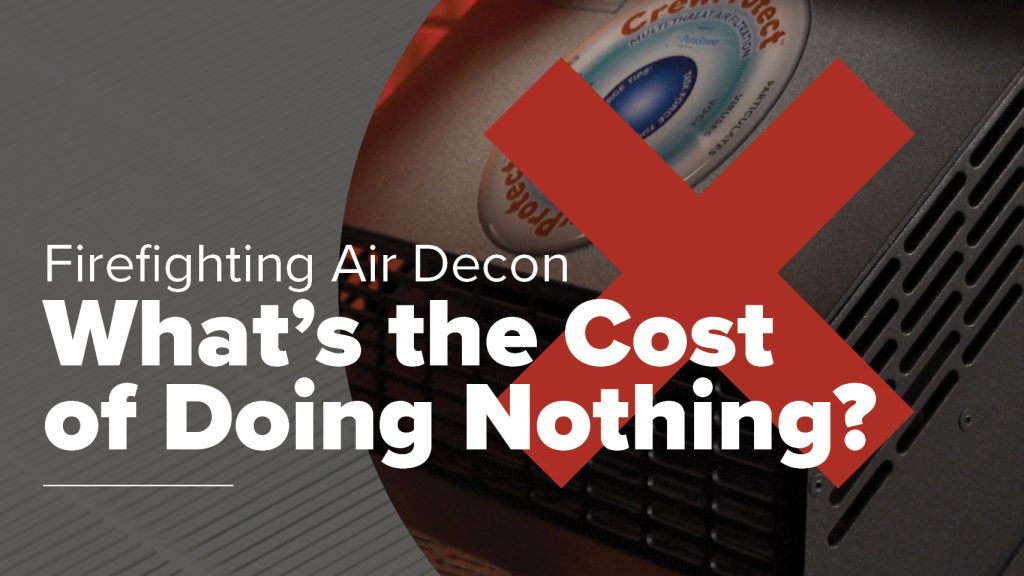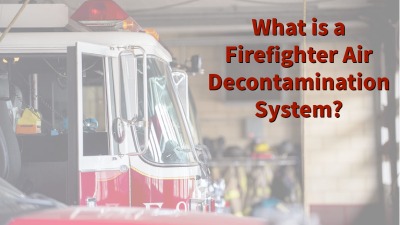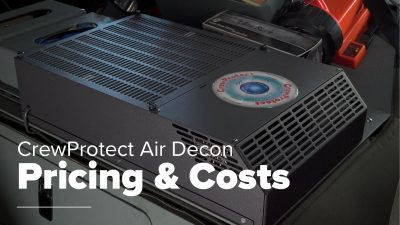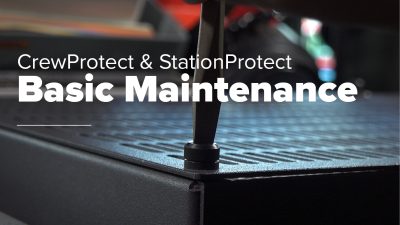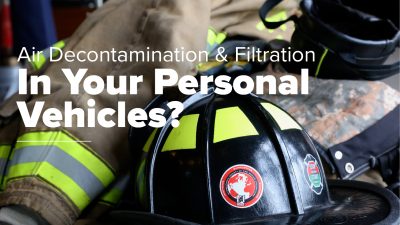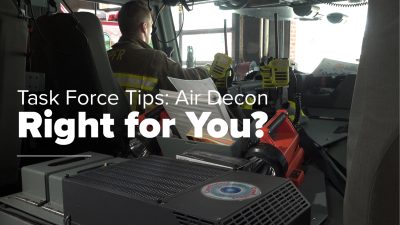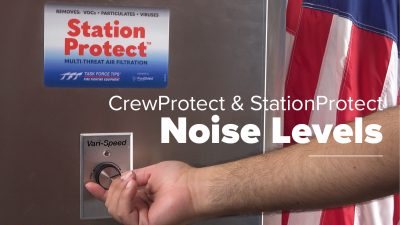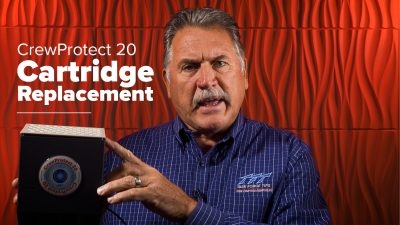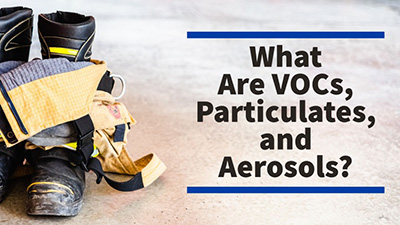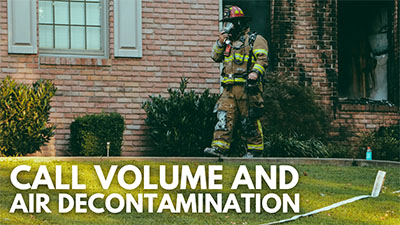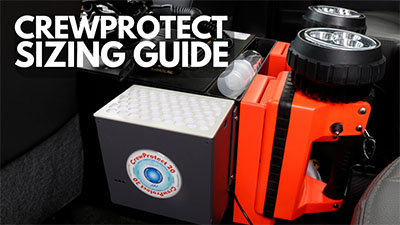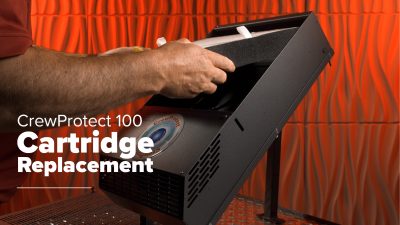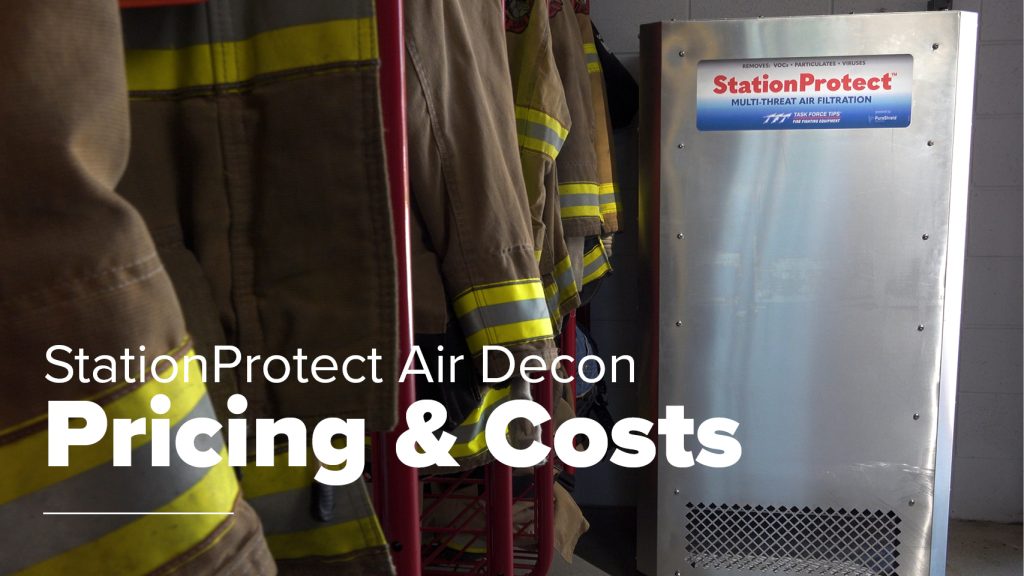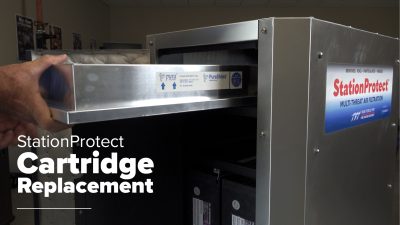Back
The 2025 Guide to Firefighting Air Filtration & Decontamination
Posted on 21st November 2024
If you’re involved in firefighting or emergency services, you have likely heard people talking about air quality, health threats, and an increased risk of cancer. Air quality is a big topic that is gaining traction as data shows firefighters have a 9% higher risk of being diagnosed with cancer and a 14% higher risk of dying from cancer than the general U.S. population.
Emergency services personnel are also subjected to viruses and bacteria in close quarters and dangerous fumes or toxins on emergency scenes.
Understanding the threats you face and the options available for fighting back are key to making a good decision for the future of your crew.
Here are a few articles to help you understand air decontamination for emergency services personnel.
How Does Air Contamination Affect Fire and Emergency Services?
Contaminants are a big threat to the health and safety of fire and emergency services workers. Firefighters in particular face threats from volatile organic compounds (VOCs) and particulates that off-gas from gear and other equipment.
This increased exposure puts emergency services workers at a higher risk of developing cancer and other health challenges. But where is the exposure happening?
Two prominent places you may be exposed to these threats are at the station and in the cab of your emergency response vehicle.
Off-Gassing
The smell of smoke on your gear, in the cab, and at the station is evidence of off-gassing VOCs, particulates, and soot. Over time, contaminants that landed on your gear are released back into the air where they can remain for extended periods of time.
What Are VOCs, Particulates, and Aerosols?
Firefighters and other emergency services workers face multiple airborne threats during their work.
Volatile Organic Compounds
Volatile organic compounds or VOCs are gases emitted into the air from a product or process. These substances can be found in paint, flooring, adhesives, furniture, wood, gasoline, and many other products. As products like this burn, these VOCs are released into the air.
Some VOCs are proven to be cancer-causing and can react with other gases to form additional air pollutants. These gases can also cling to your gear or skin and be breathed in over time.
Particulates
Particulates are another potentially cancer-causing element prevalent in the fire service. Defined by the United States Environmental Protection Agency as “a mixture of solid particles and liquid droplets found in the air,” particulates can be found in soot and smoke. They are small enough to be inhaled into the throat, nose, and lungs.
Particulates can be made up of hundreds of different chemicals, making them an extremely dangerous element to deal with. Particulates that land on your skin or get inhaled can enter your bloodstream and raise your risk of certain cancers and diseases.
Aerosols
When you think of aerosols you may think of hairspray and spray paints that use a gas to force liquid into the air. These are one form of aerosol, while the broader definition includes “any tiny solid or liquid particle suspended in a gas.”
Viruses and bacteria are often transmitted through aerosols. The virus and bacteria particles become suspended and remain airborne for seconds or hours, sometimes traveling through an area before falling from the air.
What’s the Cost of Not Using Air Decontamination?
It may be tempting to do nothing about air contamination or say you will think about it later. Unfortunately, this choice comes with its own set of costs that you should consider.
Cancer Treatment
VOCs and particulates are proven to cause cancer, and we know that firefighters have a higher chance of receiving a cancer diagnosis. According to research from the National Cancer Institute, national costs of cancer treatment in the United States are projected to increase to $246 billion in 2030. In 2018 the average cost of cancer treatment for an individual was around $150,000 in the United States.
As an employer, cancer or other long-term illness diagnosis for someone on your crew can affect your workforce, overtime budgets, and insurance costs.
Workforce Costs
If a member of your crew receives a cancer diagnosis, they may be facing the realities of surgery, chemotherapy, radiation, and ongoing medication. They will likely need time off or away for recovery, doctor appointments, follow-up visits, and added sick days as their immune system battles a devastating disease.
You will be tasked with covering those gaps in the workforce and dealing with lost productivity during that time. At a time when staffing is already difficult, having a crew member sidelined due to illness can compound your overtime costs and make filling your roster even more difficult.
Cancer Treatment Costs as an Employer
For employers, it’s important to remember that if a member of your crew receives a cancer or long-term illness diagnosis, you will likely see some of those costs. The costs of overtime, disability payments, and increasing insurance premiums are just a few ways you could see costs increase.
Your Crew’s Costs
Not every cost is related to money. For your crew, cancer or long-term illness in themselves or a colleague can lead to other issues.
Firefighting and Mental Health
Firefighters and first responders witness traumatic events and undergo a lot of stress on the job. A study of firefighters and police officers published in April of 2018 showed that rates of PTSD and depression were up to five times higher among firefighters and police officers than they were among the general public. Mental health is already a major issue your crew battles.
When a member of your crew receives a long-term illness or cancer diagnosis, it affects your whole team. Firefighting brings your crew together like a family and they often rely on each other. Diagnosis not only affects the person with the illness but also those who work with them. This can impact their mental health and work environment in unpredictable ways.
Burnout and Low Morale in Firefighting
According to a FirefighterNation.com article, 28% of employees report feeling burnt out at work very often or always. Individuals feeling burnt out are unlikely to give 100% on the job. Many factors contribute to burnout, but the long shifts and unpredictability of the job make burnout a very real possibility. When you add extra shifts, sleep deprivation, mental and emotional strain, or mental health issues, the likelihood of burnout among your crew increases.
Additionally, burnout can lead to safety concerns and a lower likelihood of individuals expressing their safety concerns or using PPE correctly.
Conclusion
Air decontamination is a valuable tool for mitigating cancer- and disease-causing particulates and VOCs in your station or vehicle. Understanding your threats and the technology available to you is key to choosing the right system for your needs.
